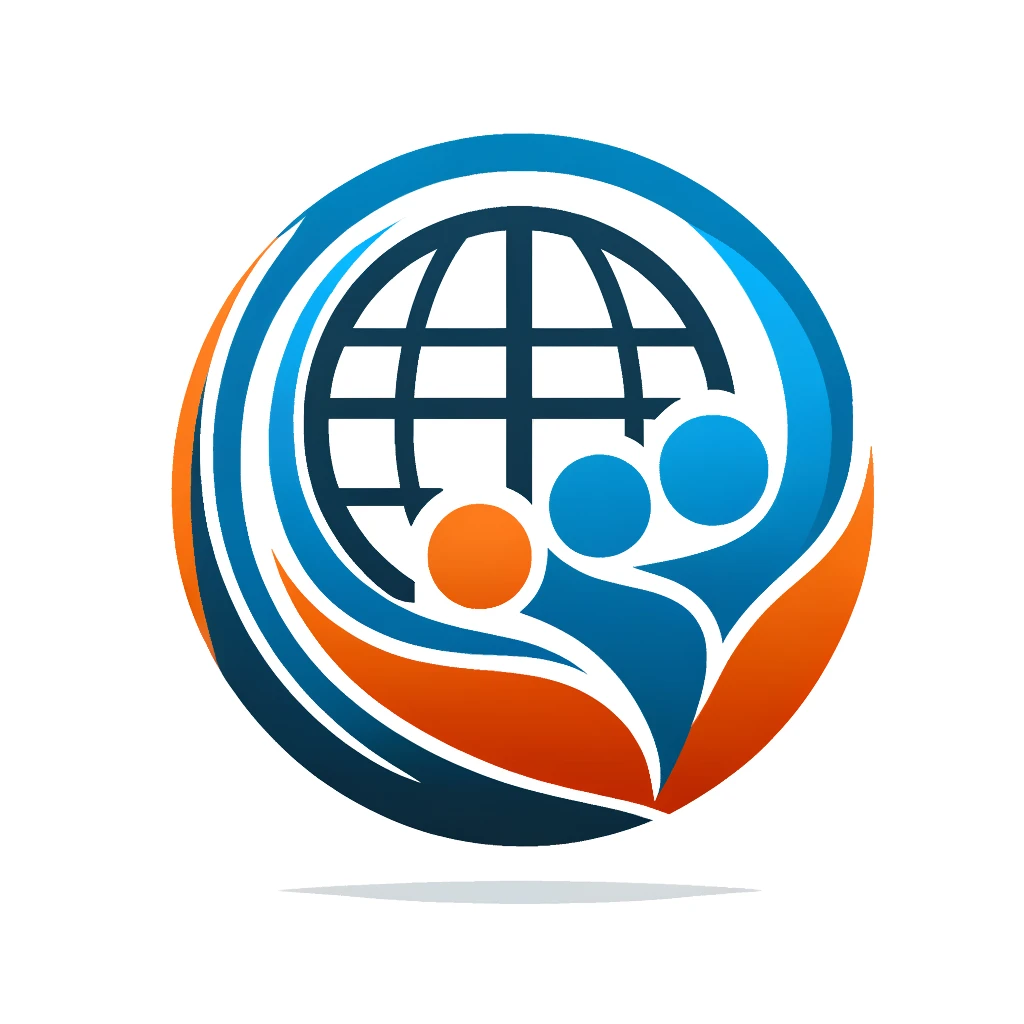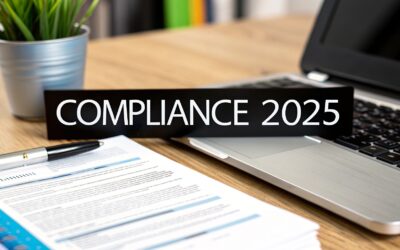Why HR Leadership Development Programs Drive Business Success

In today's ever-shifting business world, HR leadership development programs are essential. They are not merely a beneficial extra but a core requirement for navigating the complexities of the modern workplace. Investing in HR leadership development is an investment in the future of your organization, paving the way for sustained growth and success.
These programs are vital because they equip HR leaders with the tools to tackle emerging challenges. Think of the rapid evolution of technology, shifting workforce demographics, and the increasing prevalence of remote work. These trends demand a new kind of HR leader, one who can adapt and strategize effectively. HR leadership development programs cultivate crucial skills, including change management, strategic thinking, and data analysis.
Furthermore, these programs are instrumental in shaping a thriving company culture and boosting employee engagement. By nurturing leaders who champion employee well-being and create inclusive environments, organizations cultivate positive and productive workplaces. This naturally leads to improved employee retention and strengthens the employer brand. Globally, organizations invest over $60 billion annually in leadership development, underscoring its perceived importance.
However, measuring the return on this investment isn't always straightforward. Traditional training methods often fall short, with less than half of the learned material being applied on the job. This gap highlights the need for more personalized approaches. Leadership coaching, for example, has proven highly effective in developing critical skills like resilience and agility. In fact, 85% of managers who receive coaching reportedly outperform their non-coached counterparts in these areas. In a business landscape shaped by AI, hybrid work, and constant change, adapting leadership development is paramount to organizational success. For a deeper dive into the efficacy of leadership development programs, explore this insightful article: What Makes Leadership Development Programs Succeed.
Connecting Leadership Development to Business Outcomes
The positive impact of HR leadership development goes beyond individual growth. It has a measurable effect on core business outcomes, generating tangible results throughout the organization.
-
Increased Innovation: Effective HR leaders empower employees to experiment, take risks, and challenge conventional thinking. This fosters a culture of innovation, leading to the development of new products, services, and processes that give organizations a competitive edge.
-
Improved Employee Engagement: Engaged employees are the lifeblood of any successful organization. HR leaders play a crucial role in creating a supportive and empowering work environment where employees feel valued and motivated.
-
Enhanced Market Adaptability: Today’s market is dynamic. Organizations need to adapt swiftly to new trends and challenges. HR leadership development programs cultivate the agility and resilience necessary to navigate these changes effectively.
-
Stronger Succession Planning: Investing in future leaders ensures a pipeline of qualified individuals ready to assume key roles when needed. This creates a smooth transition of leadership and minimizes disruptions.
Key Benefits of HR Leadership Development Programs
Developing strong HR leaders is a strategic investment with significant returns. Some key benefits include:
-
Improved Talent Management Strategies: HR leaders are at the forefront of attracting, developing, and retaining top talent. Their expertise is vital for building a high-performing workforce.
-
Enhanced Organizational Performance: By boosting employee engagement and fostering a culture of innovation, HR leaders contribute directly to the overall success of the organization.
-
Increased Profitability and Revenue Growth: These are the natural outcomes of improved organizational performance and effective talent management.
-
Stronger Competitive Advantage: Organizations with strong HR leadership are better equipped to navigate the complexities of the modern workplace, giving them a distinct advantage in the market.
Investing in HR leadership development isn't just about individual growth; it's about building a stronger, more resilient, and ultimately more successful organization.
Crafting an HR Leadership Program That Actually Works

Forget generic training programs. Today's successful HR leadership development initiatives thrive on thoughtful planning and strategic alignment. The first step? Understanding your organization's specific needs.
Needs Assessment: The Foundation of a Strong Program
A thorough needs assessment pinpoints skill and knowledge gaps within your HR team. Gather data from multiple sources to get a complete picture.
- Surveys: Collect feedback from all HR levels about current skills, development needs, and career goals.
- Interviews: Talk with HR leaders, senior management, and other employees for deeper insights into organizational needs.
- Performance Reviews: Analyze reviews for recurring areas needing leadership development.
- 360-Degree Feedback: Gain well-rounded perspectives on individual leadership strengths and weaknesses.
This data reveals current capabilities and future requirements, enabling a program addressing key gaps. For example, if your organization is embracing digital transformation, focus on HR analytics and change management. Consider helpful resources like those available from leadership development programs.
Aligning With Strategic Business Priorities
Effective HR leadership development isn't just about individual growth; it fuels business success. Align program objectives with your organizational strategy. What are your company's top priorities? Growth? Innovation? Customer experience?
Understanding your business goals allows you to cultivate the leadership competencies needed to achieve them. This ensures HR leaders support your strategic direction and long-term success. If employee engagement is a priority, focus on communication, empathy, and building positive work environments.
Adapting to Change and Uncertainty
The need for effective leadership is more urgent than ever. Organizations face constant societal, technological, and internal changes. A 2024 global study by Harvard Business Publishing surveyed over 1,100 L&D and HR professionals. The study revealed the importance of leaders mastering a broader range of behaviors. Around 70% of respondents emphasized this need. Key objectives include automation projects, AI/machine learning, strengthening company culture, and fostering innovation. Equip your leaders to navigate change and uncertainty. Learn more about this study here.
Developing Well-Rounded HR Leaders: A Multi-Faceted Approach
Successful HR leadership programs use diverse learning methods to cultivate well-rounded leaders.
- Experiential Learning: Immerse participants in real-world scenarios through simulations, case studies, and projects.
- Mentorship: Connect emerging leaders with experienced mentors for guidance and support.
- Stretch Assignments: Challenge participants with assignments outside their comfort zones to develop new skills.
- Targeted Coaching: Provide individualized coaching for specific developmental needs.
- Formal Training: Use classroom training, online courses, and workshops to build foundational knowledge.
Blending these approaches creates a rich learning experience that caters to diverse learning styles and maximizes growth. This fosters crucial leadership skills: strategic thinking, communication, emotional intelligence, and change management. These skills are essential for navigating today's business challenges. Investing in well-rounded development strengthens your HR function and positions your organization for lasting success.
The following table outlines the key components for building a successful HR leadership program:
Core Components of Successful HR Leadership Programs
This table outlines the essential elements that should be included in any comprehensive HR leadership development program, along with their purpose and impact.
| Program Component | Purpose | Expected Outcomes |
|---|---|---|
| Needs Assessment | Identify skill gaps and developmental needs | Targeted program design, addressing critical areas for improvement |
| Strategic Alignment | Connect program objectives to business goals | HR leaders equipped to support organizational strategy |
| Multi-Faceted Approach (Experiential learning, mentorship, etc.) | Develop well-rounded leaders with diverse skill sets | Enhanced leadership competencies, improved HR function overall |
| Adaptability Focus | Prepare leaders for change and uncertainty | Increased resilience and effectiveness in dynamic environments |
By incorporating these core components, organizations can build impactful HR leadership programs that drive both individual and organizational success.
Proving Your HR Leadership Program's Business Impact

An effective HR leadership development program is more than just a line item in your budget; it's a strategic investment in your organization's future. Showing its positive influence on your company's success is vital for securing ongoing funding and demonstrating its value to leadership. This involves carefully tracking both hard metrics – the quantifiable results – and qualitative indicators – the less tangible but equally important impacts.
Measuring the Tangible Results: Hard Metrics
Hard metrics provide clear, numerical evidence of your program's effectiveness. These data points are often easier to track and present to stakeholders, painting a compelling picture of success.
-
Promotion Velocity: How much faster are program graduates climbing the ladder compared to their colleagues? A higher promotion rate indicates the program is equipping individuals with the skills and knowledge needed to take on more responsibility.
-
Retention Improvements: Has employee retention improved within HR, and has this positive effect rippled out to other departments influenced by program graduates? Strong HR leadership creates a supportive work environment, naturally leading to increased retention.
-
Productivity Gains: Have key HR processes become more efficient? Have you seen a boost in employee performance? Quantify these gains to highlight how the program contributes to overall productivity.
These metrics provide concrete proof that your HR leadership development program is developing strong leaders and driving progress towards business objectives. A well-designed program should yield noticeable improvements in these areas.
Capturing the Full Picture: Qualitative Indicators
While the numbers tell a compelling story, qualitative indicators add depth and richness to your understanding of the program's impact. These offer valuable insights into individual and organizational growth.
-
Capability Assessments: How have participants' core skills grown? Look at areas like strategic thinking, communication, and decision-making. Pre- and post-program assessments can reveal significant development in these critical competencies.
-
Engagement Scores: Have you seen a rise in employee engagement within HR and related teams? Effective leadership cultivates a more engaged and enthusiastic workforce.
-
Succession Readiness: Is your organization better equipped to handle future leadership transitions within HR? A robust leadership program ensures continuity and a strong pipeline of future leaders.
These qualitative measures offer valuable context, demonstrating how your program shapes well-rounded leaders who contribute to a more positive and productive workplace. The success of these programs is often reflected in improved employee engagement and retention. According to Gallup, companies with high employee engagement are 21% more profitable and experience a 17% increase in productivity. Leadership development directly strengthens engagement, with one study showing a 60% improvement in engagement skills just two months after training. Given the increasing prevalence of hybrid and remote work, enhancing productivity in these settings has become paramount, with approximately 63% of companies prioritizing it. Explore more insightful statistics on TestGorilla.
Communicating Program Value: Executive Dashboards
To secure continuous support for your HR leadership program, you need to present its impact in a clear, concise, and compelling manner. Develop an executive dashboard that showcases key metrics and illustrates the return on investment (ROI). This dashboard should speak the language of business, resonating with senior leadership.
This involves connecting program outcomes to financial impact. For example, show how reduced employee turnover translates to cost savings in recruitment or how increased productivity drives higher revenue. By showcasing these financial benefits, you can effectively advocate for continued investment, even when facing budget limitations. A clear and compelling dashboard reinforces the program's strategic importance, ensuring it receives the resources and backing it needs to flourish.
Building Inclusive Leadership Through Targeted Development
Creating diverse leadership isn't just a feel-good initiative anymore; it's a crucial element for success. This means HR leadership development programs must prioritize building inclusive leadership at every level. By intentionally breaking down systemic barriers and nurturing a culture of equity, these programs can truly transform leadership pipelines.
Eliminating Bias and Promoting Equity
Building an inclusive leadership program starts with addressing bias in existing processes. A critical first step is carefully examining the selection process for leadership roles. For example, using blind resume reviews, where identifying information is removed, can help reduce unconscious bias during the initial screening.
Incorporating diverse interview panels brings a wider range of perspectives to the selection process, contributing to a fairer evaluation of all candidates. Beyond selection, creating equitable opportunities for advancement is essential.
This involves establishing clear and transparent promotion criteria that everyone can access. Mentorship and sponsorship programs specifically for underrepresented groups can provide invaluable support and guidance, helping individuals navigate their career paths and overcome obstacles.
Sponsorship programs go beyond mentorship; they involve advocating for high-potential individuals from marginalized communities. Sponsors use their influence to create opportunities and connect their sponsees with valuable resources, making a real difference in building a more inclusive leadership pipeline.
Diversity and inclusion (D&I) are undeniably vital for leadership development and organizational success. McKinsey research reveals that gender and ethnically diverse executive teams are 9% more likely to financially outperform their industry peers. Learn more about their findings. Companies with diverse leadership are also 39% more likely to report higher profits.
Cultivating Inclusive Leadership Behaviors
HR leadership development programs should also focus on fostering specific inclusive behaviors. Training in cultural intelligence is key, enabling leaders to effectively manage diverse teams by developing awareness of their own cultural biases and learning to appreciate differences.
Leaders also need to develop strong communication strategies that embrace diverse perspectives and communication styles. This means creating inclusive environments where everyone feels safe and empowered to contribute their unique talents.
These programs should also include training on providing constructive feedback that is both sensitive and effective across cultures. Leaders must learn to identify and address microaggressions, subtle yet harmful behaviors that can marginalize individuals. By actively working on these aspects, programs can equip leaders to create truly inclusive work environments.
Measuring Inclusion and Holding Leaders Accountable
Establishing metrics to measure inclusion and holding leaders accountable are vital components of a successful program. This might involve tracking the representation of diverse groups at various leadership levels. Regular climate surveys can help assess the overall inclusivity of the workplace.
Connecting the results of these assessments to leadership performance evaluations creates a direct link between fostering inclusion and career growth. This fosters accountability, ensuring that inclusive leadership becomes a key performance indicator, not just a talking point. By integrating these practices, organizations can cultivate a culture of inclusion that benefits everyone.
Future-Proofing Your HR Leadership Development Strategy

The skills that once propelled HR leaders to success may not be enough in the future. This means HR leadership development programs must adapt to the evolving business landscape. A successful HR leadership development program anticipates these future needs and empowers leaders with the right competencies.
Embracing Technological Transformation
Technology is rapidly changing the workplace. Digital fluency has become essential for modern HR leaders. This means understanding and using technologies like AI, machine learning, and people analytics.
HR leaders need to use data analytics to predict workforce trends and improve talent acquisition. They should also be comfortable using digital tools for HR management, communication, and collaboration. This empowers them to make data-driven decisions and streamline HR processes.
Adapting to Shifting Workforce Expectations
Employee expectations are evolving, impacting how organizations attract and retain talent. HR leaders play a key role in shaping a positive employee experience and fostering a sense of purpose.
This requires strong skills in empathy, communication, and relationship building. Cultivating psychological safety is also essential, allowing employees to take risks and share feedback openly. This creates a more engaged and productive workforce.
Navigating Global Disruptions and Change Leadership
In today’s constantly changing world, change leadership is paramount. HR leaders must effectively manage change, guide teams through transitions, and maintain stability during times of uncertainty.
This involves developing skills in strategic planning, risk assessment, and decision-making. Clear communication and building buy-in from employees are also vital for successful change management.
Building Essential Leadership Competencies
A future-focused HR leadership development program cultivates key skills. Emotional intelligence allows leaders to understand their own emotions and build strong relationships. This creates a more positive and collaborative work environment.
Adaptive capabilities help HR leaders respond to unexpected events and thrive in dynamic environments. An inclusive mindset is also crucial, fostering a culture of respect and equity where everyone feels valued.
To further illustrate these critical competencies, the following table provides a detailed breakdown of their business impact and suggested development methods.
The table below, "Critical Leadership Skills for the Future Workplace," presents the key leadership skills HR leadership development programs should prioritize. These competencies will help prepare leaders for the challenges of the future.
| Leadership Competency | Business Impact | Development Methods |
|---|---|---|
| Digital Fluency | Improved data-driven decision-making, enhanced HR processes | Online courses, hands-on workshops, technology immersion programs |
| Change Leadership | Increased organizational agility, smoother transitions during change | Simulations, case studies, mentoring from experienced change leaders |
| Emotional Intelligence | Stronger team dynamics, improved communication, enhanced conflict resolution | Self-assessment tools, feedback sessions, coaching, experiential learning activities |
| Adaptive Capabilities | Enhanced resilience, improved problem-solving, greater flexibility | Scenario planning exercises, exposure to diverse challenges, cross-functional projects |
| Inclusive Mindset | Increased diversity and inclusion, improved employee engagement, stronger company culture | Diversity and inclusion training, cultural awareness workshops, mentorship programs |
This table highlights the important connection between developing these competencies and their positive impact on the organization. By prioritizing these skills, organizations can empower their HR leaders to navigate the complexities of the future workplace.
By focusing on these core skills, companies can develop a robust HR leadership development program. One that prepares future HR leaders for the changing world of work. These programs should also refresh content and delivery methods to remain relevant and maintain a leading-edge approach to HR leadership development.
Real-World Success: HR Leadership Program Case Studies
Theory provides a foundation, but real-world examples truly inspire. This section explores case studies of successful HR leadership development programs, showcasing their tangible impact. These diverse examples, from various industries and organizations, reveal the challenges faced, the approaches taken, and the positive outcomes achieved.
Case Study 1: Marriott's Voyage Program
Marriott International's Voyage Program stands as a shining example of a successful HR leadership development program. This 12-month program, designed for recent college graduates, immerses participants in manager-level positions within Marriott hotels. They receive full pay, benefits, and relocation assistance, along with structured learning, departmental rotations, mentorship, and real-world problem-solving opportunities.
The Voyage Program yields impressive results. Participants gain invaluable experience, cultivate essential leadership skills, and often advance quickly within Marriott. The program also serves as a crucial talent pipeline, ensuring a consistent flow of qualified individuals ready for leadership roles. This case study emphasizes the power of a structured, immersive approach. Learn more: Everything You Need to Know About Marriott’s Voyage Program.
Case Study 2: A Technology Company's Focus on Digital Fluency
A rapidly expanding technology company recognized the growing importance of digital fluency for its HR leaders. They implemented a development program focused on data analytics, AI in HR, and digital HR management tools. The program combined online courses, hands-on workshops, and immersive technology experiences.
This targeted approach significantly boosted HR's data-driven decision-making abilities. HR leaders gained proficiency in using new technologies to streamline processes, optimize talent acquisition, and enhance the employee experience. This case study demonstrates the value of aligning HR leadership development with specific organizational needs, especially in the face of evolving technology.
Case Study 3: A Healthcare Organization's Emphasis on Change Leadership
Facing significant industry changes, a healthcare organization implemented an HR leadership development program centered on change leadership. The program incorporated simulations, case studies, and mentorship from seasoned change leaders. Participants also tackled real-world projects related to managing change within the organization.
This program equipped HR leaders with the skills and confidence to navigate the complexities of change. They became adept at communicating change effectively, securing employee buy-in, and managing resistance. This resulted in smoother transitions during organizational restructuring and improved employee morale during challenging times. The case study highlights the importance of change leadership skills in dynamic industries.
Case Study 4: A Retail Company's Investment in Inclusive Leadership
Committed to diversity and inclusion, a large retail company launched an HR leadership development program focused on building inclusive leadership. The program incorporated diversity and inclusion training, cultural awareness workshops, and mentorship. Leaders also collaborated on group projects addressing specific D&I challenges within the company.
This program significantly raised awareness of diversity and inclusion among HR leaders. It fostered more inclusive behaviors, creating a more welcoming and supportive work environment. The company saw noticeable improvements in employee engagement and a more diverse leadership pipeline. This case study illustrates how targeted programs can foster inclusive cultures and improve business outcomes.
These case studies showcase the profound impact of well-designed HR leadership development programs. They demonstrate how such programs can empower individuals, address critical organizational challenges, and drive business success.
Ready to empower your HR leaders and transform your organization? Explore the programs offered by the Global Human Resource Institute. Visit https://www.globalhrinstitute.website to learn more about our certifications and how we can help you build a world-class HR team.




0 Comments